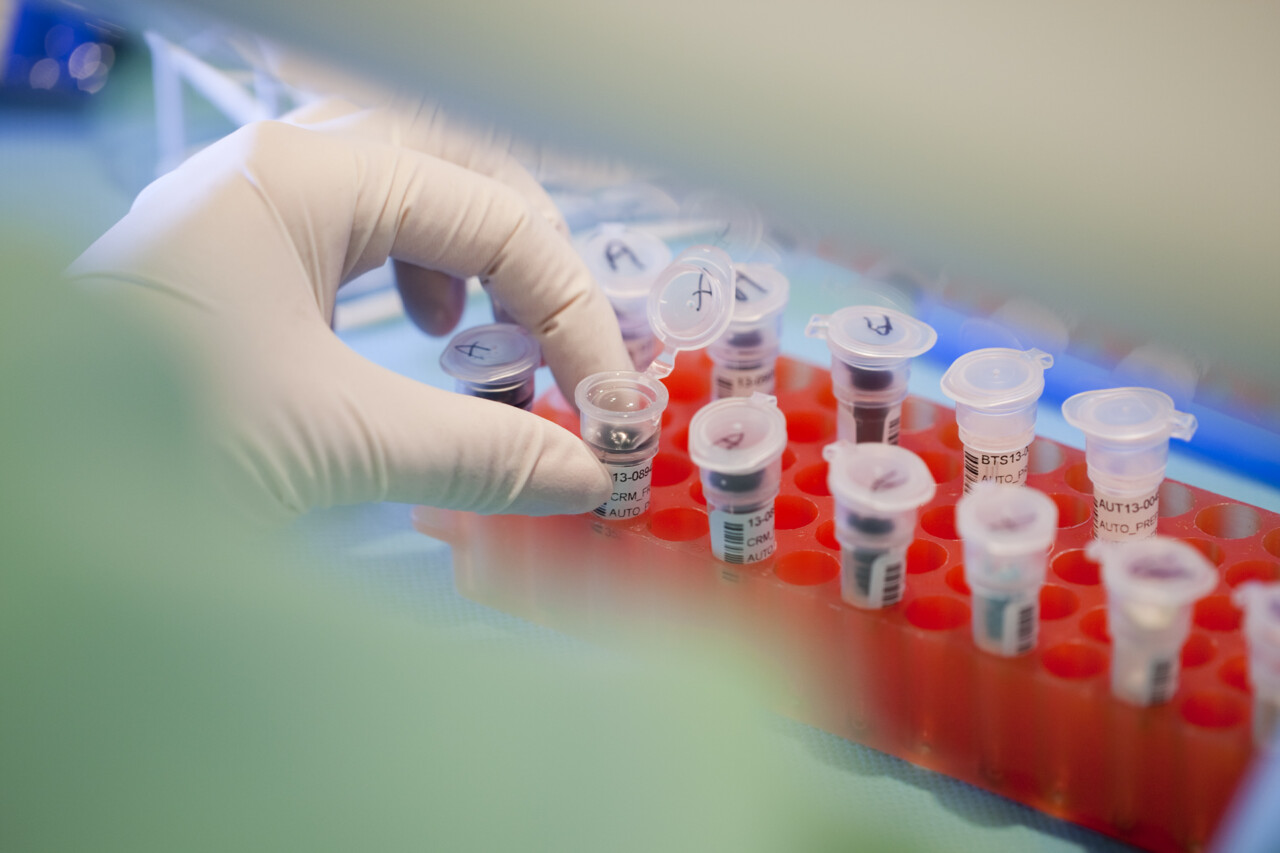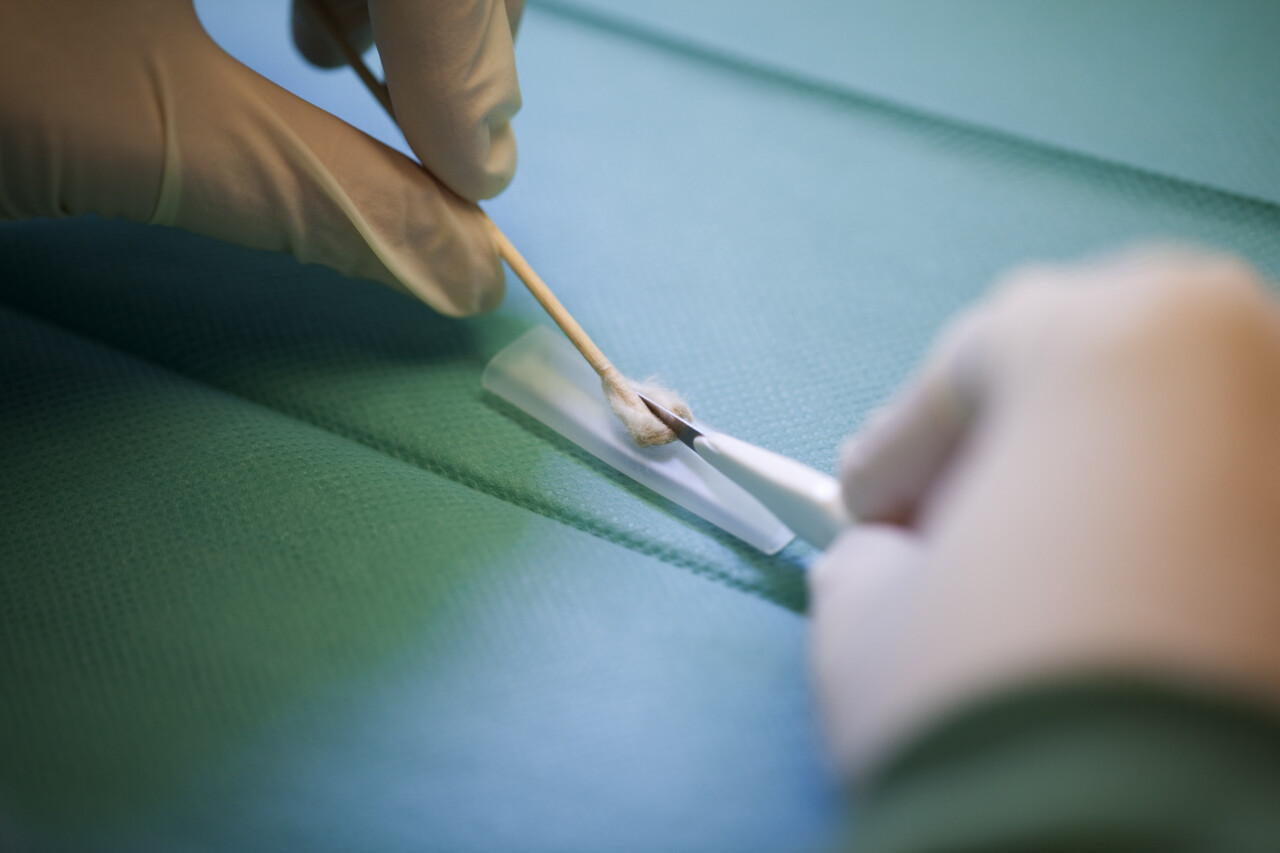Universitetsavisen
Nørregade 10
1165 København K
Tlf: 35 32 28 98 (mon-thurs)
E-mail: uni-avis@adm.ku.dk
—
Science
True crime — An investigation method that combined the analysis of DNA and genealogy may have solved a 34-year-old murder case. The Department of Forensic Medicine at the University of Copenhagen helps the Danish police solve crimes.
In an unsolved murder case from 1990, there was an important breakthrough in February this year. And it has led to the arrest and indictment of a 54-year-old man, who has pleaded not guilty. The new development in the case is due to a trace of DNA from the murder victim Hanne With’s trousers, that has been combined with genealogy. But it is not the defendant’s DNA that the forensic geneticists have matched. It is the DNA of a close family member.
GENETIC MATERIAL
DNA is the genetic material of all living organisms. The DNA is packed in chromosomes, which in humans are usually assembled in 23 pairs. One half of a person’s DNA comes from the mother, the other half from the father. That’s why forensic geneticists can use DNA to match people with close family members.
DNA was first described in 1869 by the Swiss chemist Johann Friedrick Miescher.
The method, which may have secured the key piece of evidence in the 34-year-old murder case, is striking. But it is not new that possible perpetrators can be found on the basis of DNA material from close family members.
The University Post visited the Department of Forensic Medicine at the University of Copenhagen to learn more about how the forensic geneticists assist the Danish police in solving various crimes. Last year, the section provided 35,826 DNA analyses to the police.
It received more than 15,500 criminal cases with more than 32,000 items for DNA examination from the police.
Two of the people working here as forensic geneticists are Morten Wiuf and Carmen Tomas Mas. They will not comment on the specific case, but on the underlying methods and work processes at the department.
In the morning, the police hand over the items to be examined at the criminal justice section, where Morten Wiuf is affiliated. It can be clothes, a cotton swab, a condom, or something like that.
»We can then undertake an examination of saliva, semen or blood, for example. The police ultimately want to get a DNA profile out of it,« says Morten Wiuf.
A DNA profile consists of a series of numbers and can be compared to a barcode. With the DNA profile, the police can now search their database for a potential match.
»In this way, we are a bit like any other company. We get an order in, and we deliver a service,« says Morten Wiuf.
In the Hanne With case, forensic geneticists had created a DNA profile based on a DNA sample found on the victim’s trousers at the crime scene. It had not, until now, been possible to match the DNA profile with a person in the police register.
But in 2022, police were given greater leeway to do searches among relatives in connection with investigations.
This means that the police can now search on the profile and thereby find any matches that are closely related to the holder of the full DNA profile.
»The police have traditionally done searches for a full profile match. But now they can also compare with a partial profile and see if there can be a match based on this. This is what’s new in this case,« says Carmen Tomas Mas.
In this way, the police can, so to speak, carry out a form of genealogy when they do a search through their DNA register, she adds.
How do you talk to family and friends about your work as a forensic geneticist?
Morten Wiuf:
»I do not say anything. And it’s really to make it easiest for everyone.«
Carmen Tomas Mas:
»I feel the same way. We can talk about it in general. What we do, and what kind of studies we can do, but that’s it.«
Carmen Tomas Mas is associated with the section at the Department for Forensic Genetics that investigates family relationships. They do this, for example, in cases for the Danish Agency of Family Law which deals with things like paternity and adoption, and the Danish Immigration Service.
But they can also become involved in criminal proceedings when further investigation on kinship needs to be done.
When the police find a match in, say a half DNA profile from a relative, as in the Hanne With case, it can be used in further investigation. If, in the course of the investigation, the police then start to suspect that they have a possible perpetrator, a new investigation is carried out where the department compares the full DNA profile of the possible perpetrator with the DNA profile extracted from the original DNA sample. If they then get a match, it can be used as part of the evidence.
Technology in this area is constantly evolving. And it has changed since Morten Wiuf and Carmen Tomas Mas were employed as forensic geneticists at the University of Copenhagen in 2007 and 2008, respectively.
»It was much more manual back then. You examined one DNA system at a time, and you had to do much more yourself. Today, machines do most of it, and they are far more sensitive than before,« says Carmen Tomas Mas.
In this way, we are a bit like any other company. We get an order, and we deliver a service
Morten Wiuf, forensic geneticist
»The amount of DNA we need is also less. Today, our lower threshold is 100 picograms of DNA, whereas it used to be 200 picograms, so we are constantly shifting our options with the technology,« says Wiuf.
The Hanne With case has stirred up the political debate about whether genetic genealogy research should be allowed in the investigation of crimes in the future.
With this method, you would be able to search commercial DNA databases from genealogy services like MyHeritage.
The method is legal in the United States, and let the police track down Joseph James DeAngelo, known as The Golden State Killer, who between 1974 and 1986 was behind at least 13 murders, 51 rapes, and 120 burglaries in California.
If this method is legalised in Denmark, the two forensic geneticists do not believe that it will significantly change their work however.
»It will primarily change the work of the police and what they can search for. We just deliver a service based on an order just like any other company,« says Morten Wiuf.

